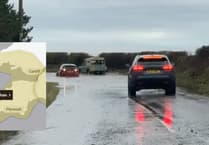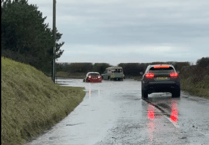SOUTH West Water is committing to delivering its final Drainage and Wastewater Management Plan, which sets out a delivery plan for storm overflows to meet the Government’s expectations, by 2040 - a decade faster than the target of 2050.
The water firm published its draft Drainage and Wastewater Management Plan (DWMP) in June 2022.
It consulted on the plan across the region, listening to views from customers and stakeholders who told the company that they wanted them to prioritise the challenge of storm overflows as soon as practicable.
South West Water heard what customers and stakeholders said and has amended the final Drainage and Wastewater Management Plan (DWMP) to reflect these views.
As a result, the company’s final DWMP sets out a delivery plan for storm overflows to meet the Government’s expectations by 2040, a decade faster than the target of 2050.
John Halsall, Chief Operating Officer of South West Water, said: “We have listened to our customers and stakeholders and this is another example of how serious we are about reducing our use of storm overflows and investing responsibly to reduce our impact on the environment.
“We want our customers to have a water company they are proud of, and this is one of many steps we are taking to help rebuild trust, over time by taking action.”
DWMPs are long-term plans that outline how the company intends to approach and manage sewerage and wastewater in the region over the next 25 years.
South West Water has set out how it will evolve its water recycling system into one that future generations can be proud of and will:
1 Protect people, homes and businesses from flooding
2 Support tourism and the long-term economic health of the region
3 Increase the use of nature-based solutions, innovating to protect our unique environment and reducing our carbon footprint
4 Eradicate pollutions and the damage caused by plastics, fats and wet wipes for the long-term benefit of all.
• The Government defined a timetable of deliverables for the water industry. This states that by 2050 all companies must meet the specific targets for ecological harm, bathing waters, shellfish areas and that all storm overflows would be reduced to no more than 10 spills per annum.
Each wastewater treatment works in our region has an area that it serves. It calls these catchments. Currently, SWW have about 653 of these.
To enable it to focus, its planning is divided into 22 larger catchments – this means it can manage our region as an entire system rather than looking at smaller challenges isolated to individual treatment works.
More information about the DWMP can be found here: Drainage and Wastewater Management Planning – Our emerging plan to 2050 (southwestwater.co.uk) .





Comments
This article has no comments yet. Be the first to leave a comment.